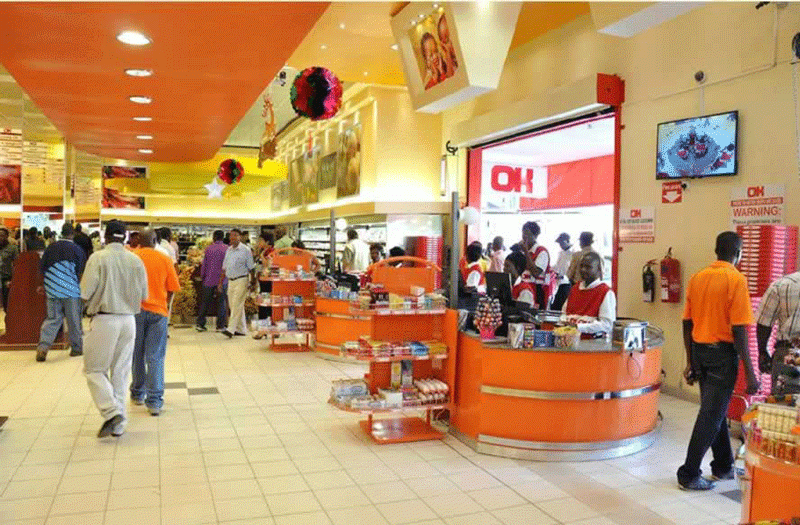
LEADING economists this week warned of potentially dire ramifications of waves of price hikes and currency volatilities on an economy that has slashed 2024 growth targets three times.
In November, the Ministry of Finance forecast gross domestic product (GDP) to rise by 5,3%. This rates would be downgraded to 3,2% this July, citing a severe drought.
But in a monetary policy statement released last month, the Reserve Bank of Zimbabwe cut GDP growth to 2%, in line with predictions by regional institutions, including the African Development Bank.
The central bank also cited the drought’s toll on the economy, along with softening international commodity prices.
But that was before Zimbabwe Gold (ZWG) — a structured currency introduced in April, came under pressures from black market dealers, suffering major setbacks in the past few weeks.
Since its launch, ZWG has also surrendered value on the formal markets, sliding from US$1: ZWG13,56 at launch to about US$1: ZWG13,95 currently.
It has plummeted on the black market from about US$1:ZWG16 at launch to rates of about US$1:ZWG32 this week.
Fundamentals behind the slide remain a subject of speculation.
- Rampaging inflation hits Old Mutual . . . giant slips to $9 billion loss after tax
- Monetary measures spur exchange rate stability: RBZ
- Zim deploys IMF windfall to horticulture
- Banker demands $21m from land developer
Keep Reading
But the downward spiral is expected to have far-reaching consequences.
“These price increases will strain household budgets, especially for low income families,” Chenayimoyo Mutambasere, an economist at the Centre for Economic Justice, told businessdigest. “When prices of staple items like food, cooking oil, and toiletries rise, consumers are forced to either cut back on consumption or reallocate spending, potentially compromising on health or education needs.”
Mutambasere said a multi-currency system in Zimbabwe had also added layers of fraility to the economy. She said if prices rose in US dollars and ZWG, they reflected broader inflationary pressures.
“This is in line with poor infrastructure development, which introduces supply chain challenges as businesses have to subsidise energy using expensive fuel powered generators,” she said.
Escalating price hikes signalled a declining currency, stripping away the value of earnings and savings, and widening economic inequality, she said.
“Continuous price hikes of basic commodities typically drive overall inflation rates higher,” Mutambasere noted.
“As costs increase for food, fuel, and other essentials, it leads to a sustained upward pressure on inflation. This can create a vicious cycle, where businesses and retailers, anticipating further inflation (pressure), increase prices pre-emptively, which only exacerbates the problem.
“In a dual currency environment like Zimbabwe’s, if the local currency continues to lose value prices increase. This could lead to further depreciation. Businesses and consumers may increasingly prefer to transact in US dollars to preserve value, undermining the local currency's stability.”
Gift Mugano, executive director at Africa Economic Development Strategies, said inflation would cripple Zimbabweans’ buying power.
“What you also have to understand is that it's not only the ZWG prices which are going up,” Mugano said.
“There are also US dollar prices. I am sure you have seen the price of Mazoe Orange Crush going for US$7,95. That is the tragedy of the distortions caused by exchange rate disparities,” he said.
The Mazoe brand had generally been priced at half the US$7,95.
“You have seen that the official rate is like half the parallel market rate. We are hearing parallel market rates of US$1: ZWG30 or US$1: ZWG28, when the official rate is just around US$1: ZWG14.
“So, the price also in USD has doubled in the shops, because shops are forced to use the official rate. Again, USD inflation is increasing at a faster rate.”
He predicted a total collapse of the local currency as the government’s official exchange rate stagnates, the parallel market escalates, and companies reject it for the greenback.
“I am seeing a total collapse of ZWG because if the rate is not moving and the parallel market has moved, it has failed …,” he said. “Companies are virtually now demanding US dollars and rejecting ZWG. In fact, you also have seen the government paying farmers 100% US dollars when it comes to wheat purchases by the Grain Marketing Board.
“Are you expecting the Government of Zimbabwe to pay 100% for their own commodity, wheat, in US dollars? Is it not a clear message that the ZWG has failed? Farmers are also refusing it.”
Economist Vince Musewe said: “Clearly, there is very little confidence in ZWG and the dollar will continue to be the currency of preference by the majority of the market. We still have a long way to go and history will continue to repeat itself.”










